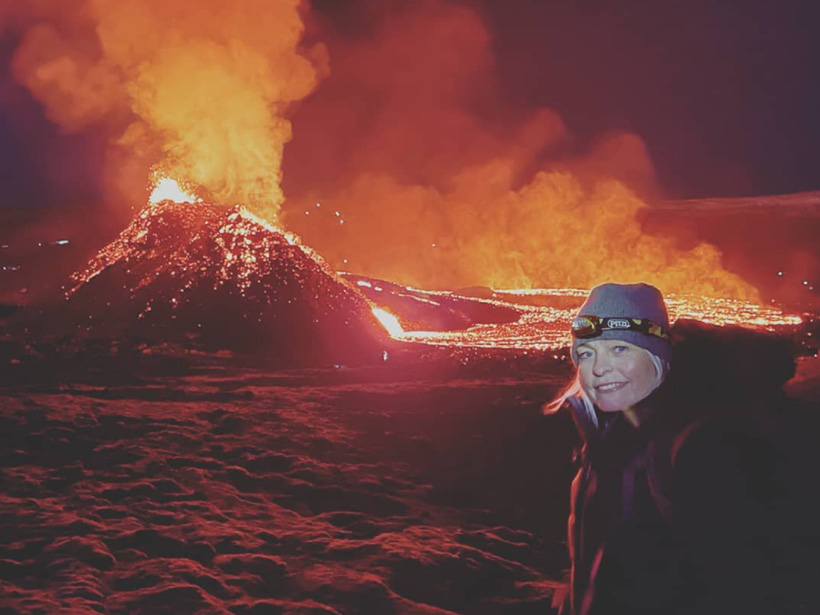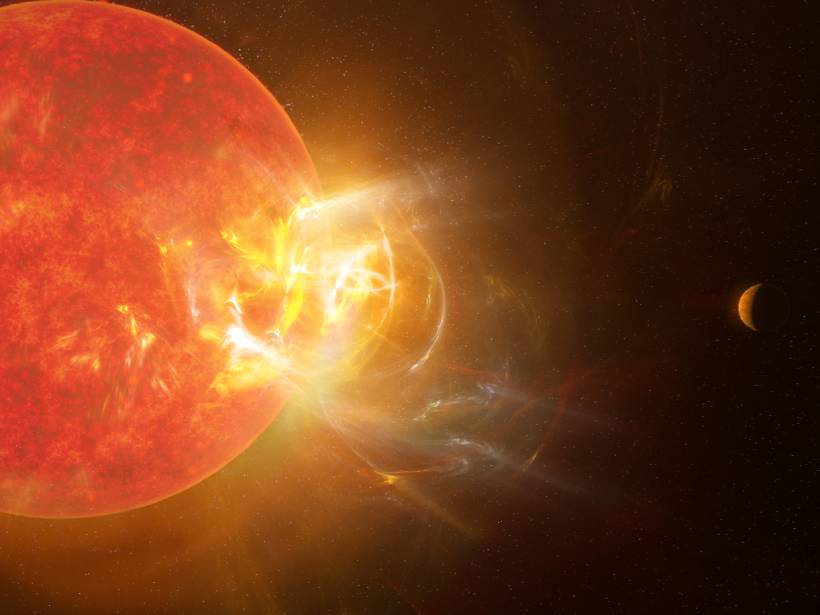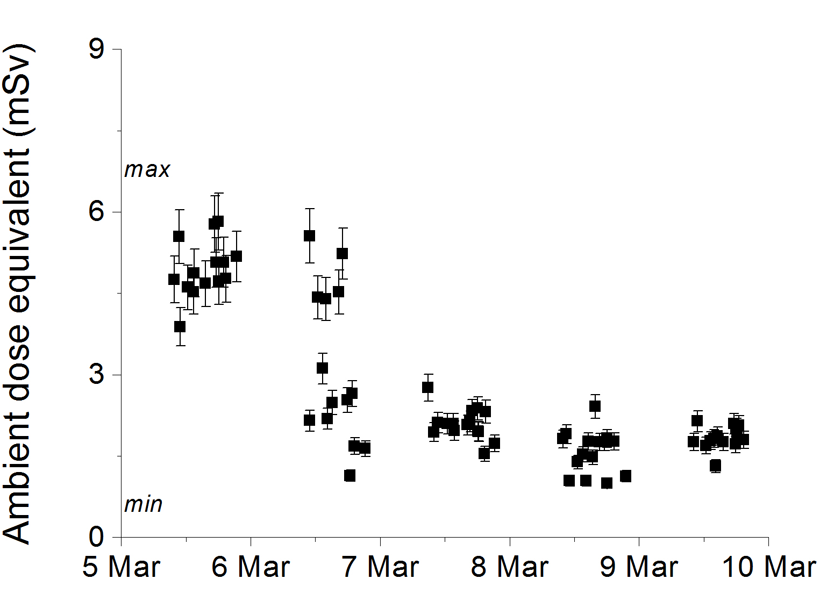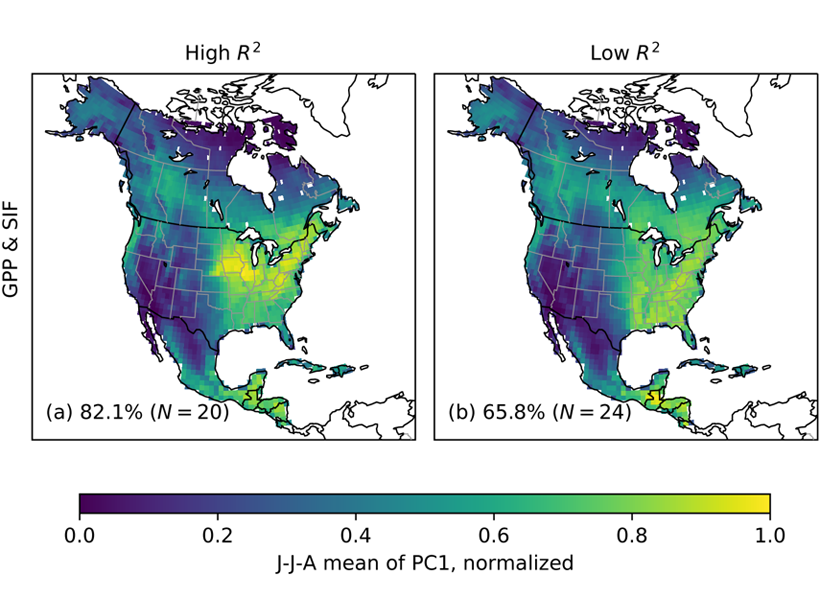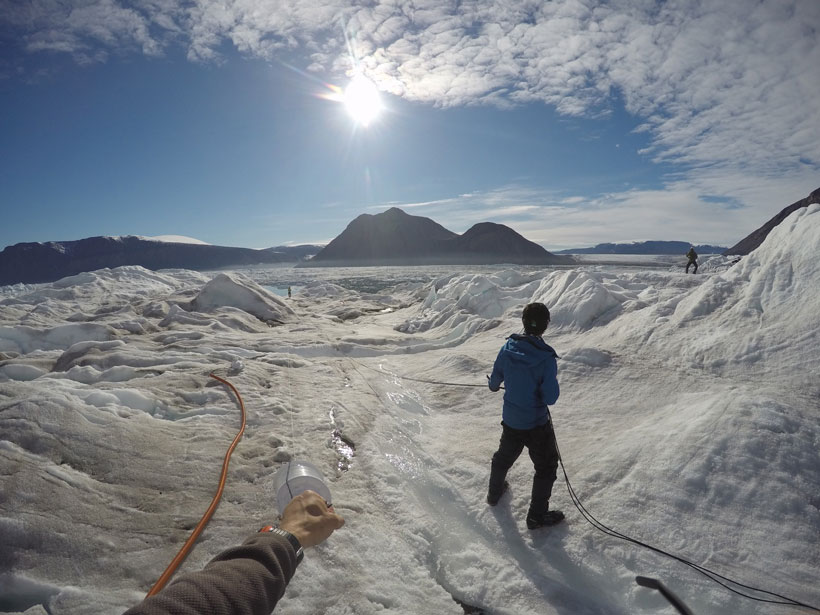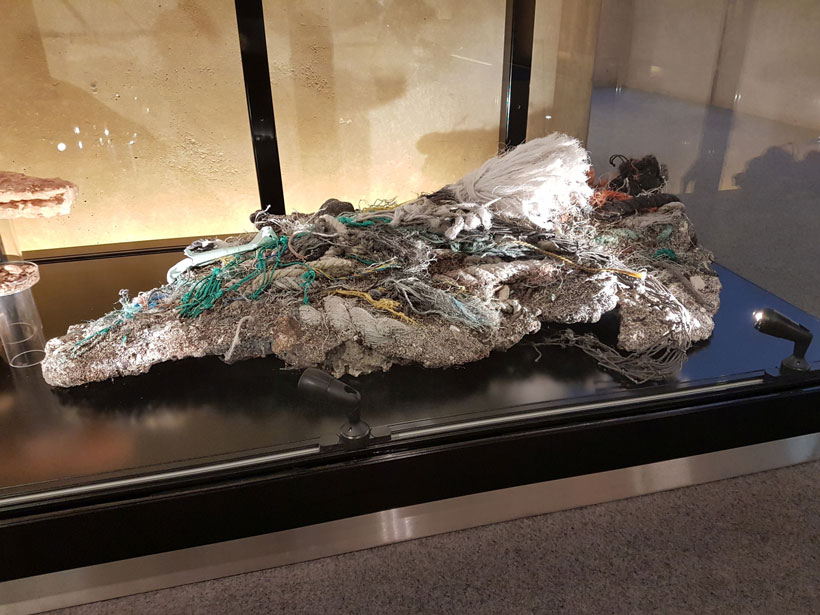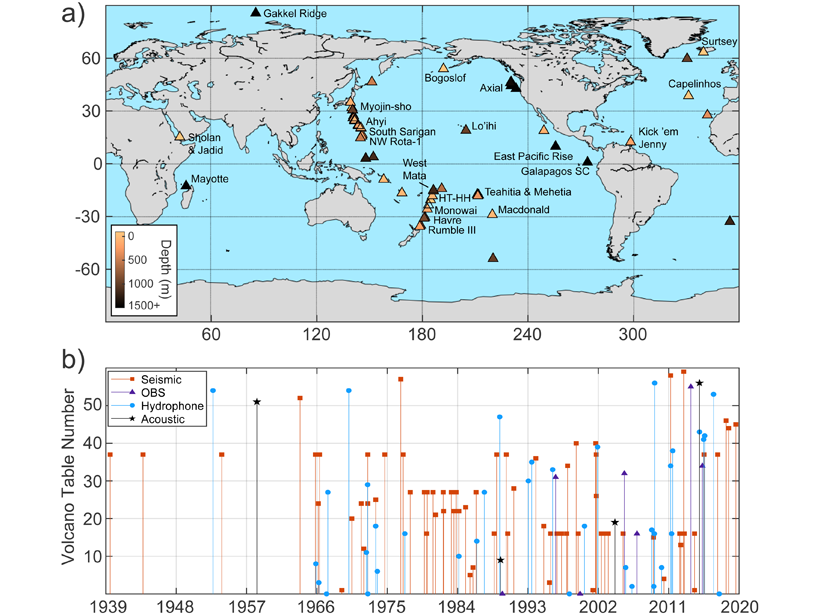The Icelandic Meteorological Office has been tracking unrest near erupting Fagradalsfjall since December 2019, while researchers elsewhere explore new methods to see Iceland’s seismic swarms.
2021 CC BY-NC-ND
Martian Meteorites Shed Light on Solar System’s Early Dynamics
Chemical compositions of rocks from Mars indicate that the earliest orbits of Jupiter and Saturn were more circular than they are today.
Record-Setting Flare Spotted on the Nearest Star to the Sun
Proxima Centauri recently let loose a blast of radiation, and ground- and space-based telescopes detected the record-setting event at wavelengths ranging from radio to the ultraviolet.
Scientists Hope Atmospheric Modeling Can Predict Meteotsunamis
The first extensively documented air pressure–driven meteotsunami on one of the Great Lakes presents an opportunity to use existing weather models to predict when these potentially deadly waves will strike.
Severe Radiation Storms Pose Health Risk to Air Travel
Simulations of radiation storm fluxes on real flight paths highlight how severe space weather could expose aircrew and passengers on busy transatlantic routes to significant radiation doses.
How Do Croplands Reduce CO2 During the Growing Season?
Regional variations in the seasonal drawdown of atmospheric CO2 can be used as a benchmark for evaluating models and satellite-derived estimates of land carbon uptake.
The Chaos Beneath a Glacier’s Calving Front
For the first time, researchers have captured continuous data on the abrupt changes and activities happening at a glacier’s calving front.
La dificultad de definir el Antropoceno
Los humanos pueden estar en una nueva época geológica, el Antropoceno, pero diferentes grupos definen su comienzo en diferentes momentos. ¿Cuándo debería haber comenzado el Antropoceno?
Taking Flight to Study Clouds and Climate
A new mission involving synchronized aircraft observations is collecting data vital for improving our understanding of how aerosol particles and clouds influence each other.
A Comprehensive Review of Submarine Volcano Seismoacoustics
Although most of Earth’s lava erupts beneath the oceans, submarine volcanoes are comparatively understudied, but a new review of submarine volcano seismoacoustics provides a framework for future work.

